LUTSO IN HER OWN WORDS
Lutsojam, known as Lutso, is the only female tangka painter in Rebgong to have successfully established her own studio. Lutso generously agreed to answer questions compiled by students Magdalena Polak, Dani Lin, and professors Xue and Kendall. Professor Xue, who has known Lutso since 2013, interviewed her on February 25, 2021.

The artist Lutso at work.
How many students do you teach in your studio? Are they women or men?
Lutso: Now I have six apprentices, two of them are women. I’d like to recruit two or three more this year, preferably women. Because it’s not convenient for women to learn tangkas at a male painter’s studio, women often feel intimidated or discouraged. I want them to come to my studio and learn tangka painting.
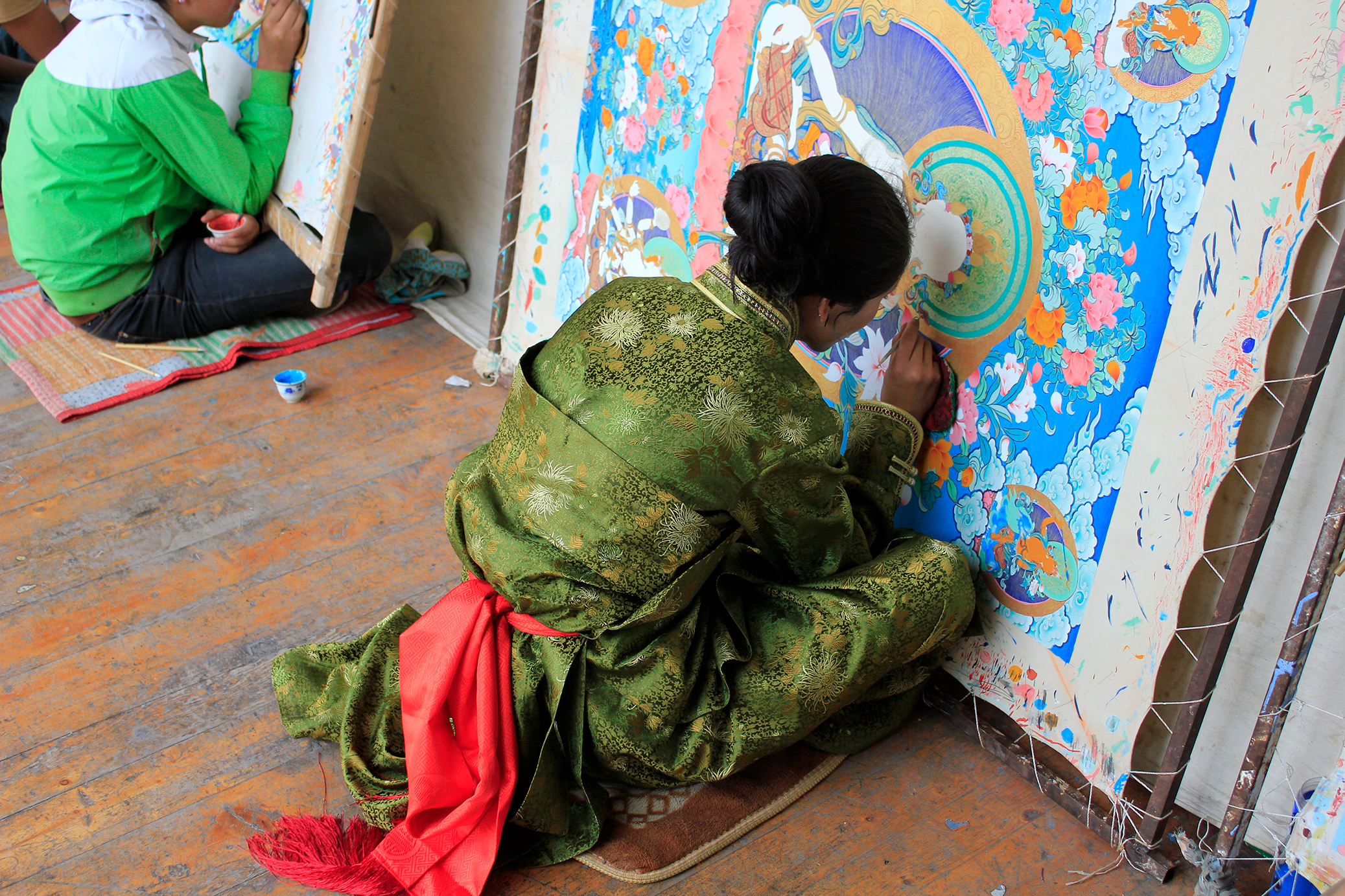
A female tangka painter practices her craft at an art school.

Lutso instructs students at her tangka studio.
Do you see a difference between tangka painted by male painters and by female painters?
Lutso: Male painters do not attend to details as much as female painters do. For instance, when a male painter says he has finished the painting, if you go and take a look at it, you will find there are still many places that need embellishment. Some details are not even painted in! [laughs] But when you check the work of a female painter, she usually does a complete job. Female painters may work more slowly than male painters, but female painters mind every detail.
What distinguishes your own paintings from the male painters’ works?
Lutso: Again, I think it’s the detail, for instance, the gold lining and embellishment. On the other hand, women do not accept commissions of certain subjects, especially deities associated with tantric teaching such as Yamantaka and Palden Lhamo whom women are forbidden to paint. Even though I have male apprentices who can paint those deities, I do not accept such commissions, just to be safe. But I think it’s unfair. Why can men paint those deities? Yamantaka is one subject that really showcases the painter’s art skill. When I was in the art school, all senior students, me included, practiced sketches of Yamantaka. My teacher said it was okay for women to paint Yamantaka, that we must only avoid the last step, the vivification. But to be safe, I never accept commissions of Yamantaka in my studio. Theoretically, all men or women who are not initiated into the teachings associated with these deities are forbidden to view or to paint their images. Even so, most male painters are never initiated but they paint [Yamantaka] anyway.

Lutso pays close attention to even the smallest details in her work.
Why are there so few women painters like yourself? Do you think that this will be different in the future?
Lutso: I posted an advertisement to recruit apprentices last month. I hope there will be women who would like to come to my studio and learn tangka painting from me, but none have applied yet. Only men called. Let me tell you this: Some women of my cohort in the art school have given up painting entirely. Many of them, after they are married or have children, have little time for painting because they need to attend to farming, childcare, household work, etc. I heard that some of my classmates, now living in the villages with their painter husbands, say that they have only one or two hours for painting every day because they have so many other responsibilities. But they insist on painting, even if it’s just for an hour or two, because they are afraid that if they stopped painting, they’d never paint again. Some households operate family-owned tangka studios and this situation is better for women because everyone in the household is painting, but still, women have housework, cooking, and childcare to do.
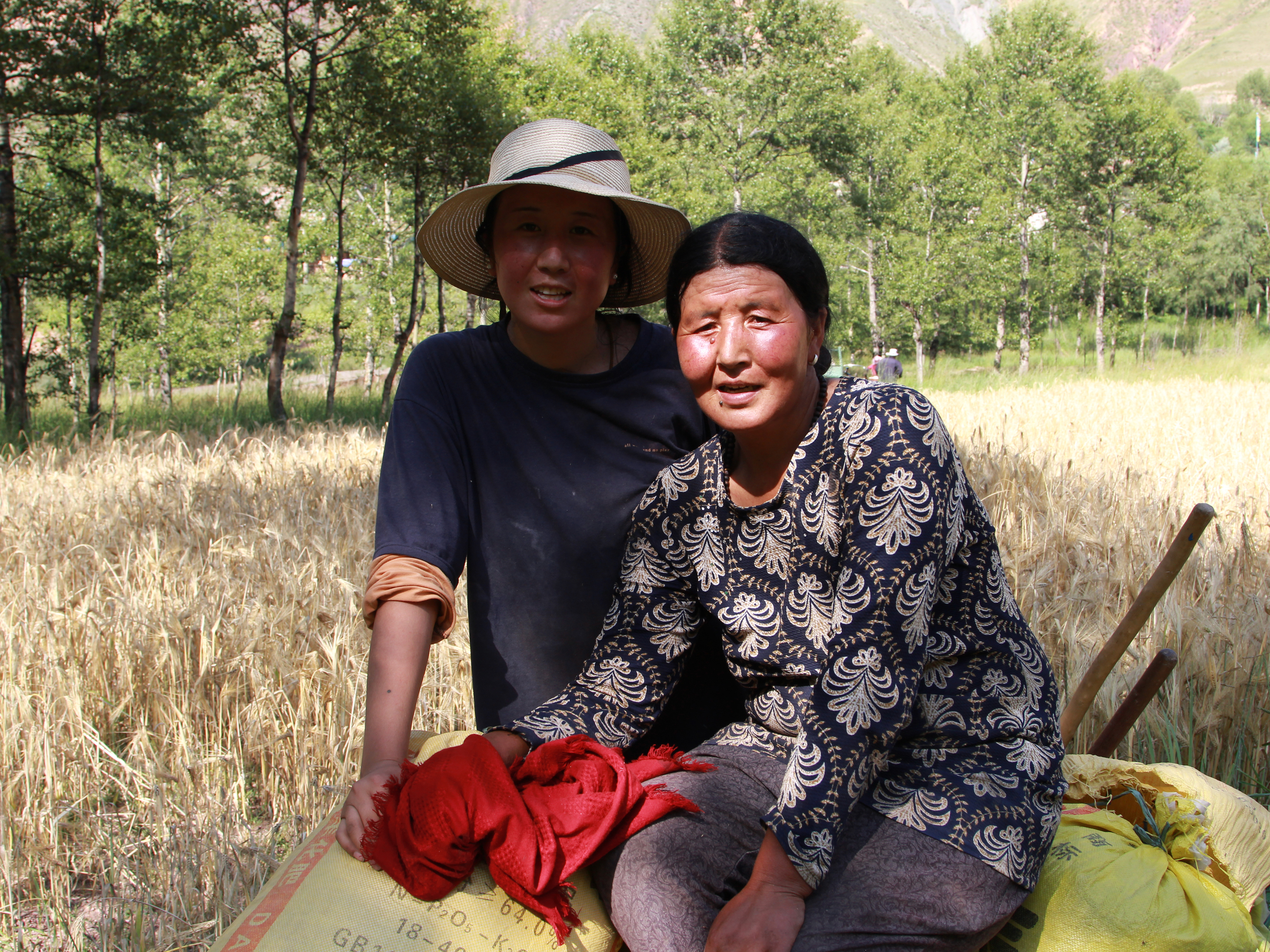
In addition to painting tangkas and running her art studio, Lutso still performs the tasks expected of her in farming, housework, and childcare.
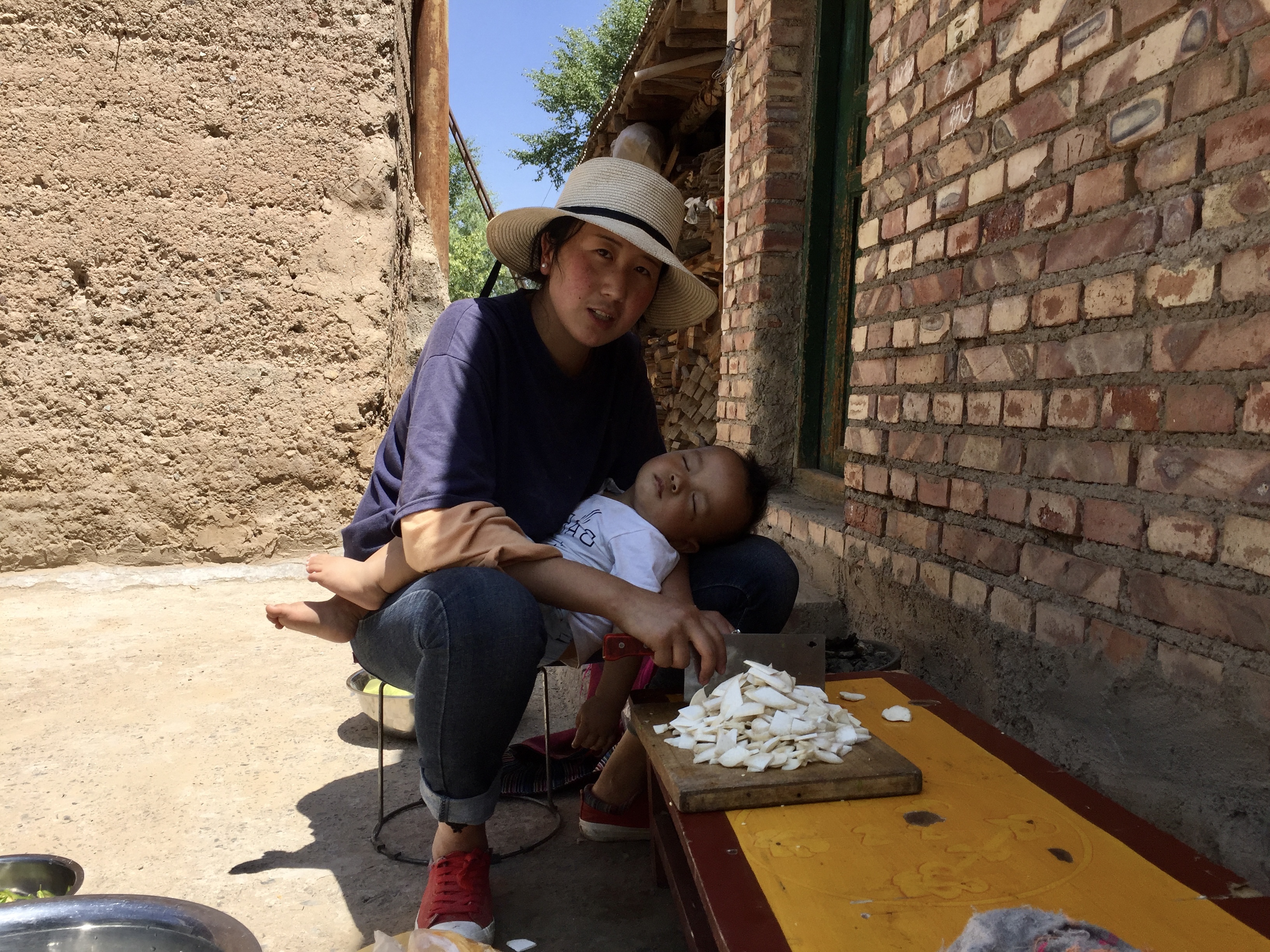
In contrast, take me as an example, I start painting around 7:30 in the morning, take a lunch break and a nap for an hour and a half, and continue painting until 7:30 in the evening. Often, I need to work extra hours at night, from 8 to 11:30. So I paint on average 14 hours a day. I paint ten days and take a one-day break, and back again. Male painters paint at least 10 hours a day. How can women in the village, with farm work, housework, and childcare, paint 14 hours a day? Alternatively, some of my [female] cohorts choose to stay in the art school. They are like me, just painting, no other distractions. I don’t know about the future. But I do want to have female students. They will be more comfortable and learn a lot from me if they come to my studio [rather than going to a male painter’s studio].
You have been involved in the art market for a few years. Do you think the market treats male painters and female painters equally?
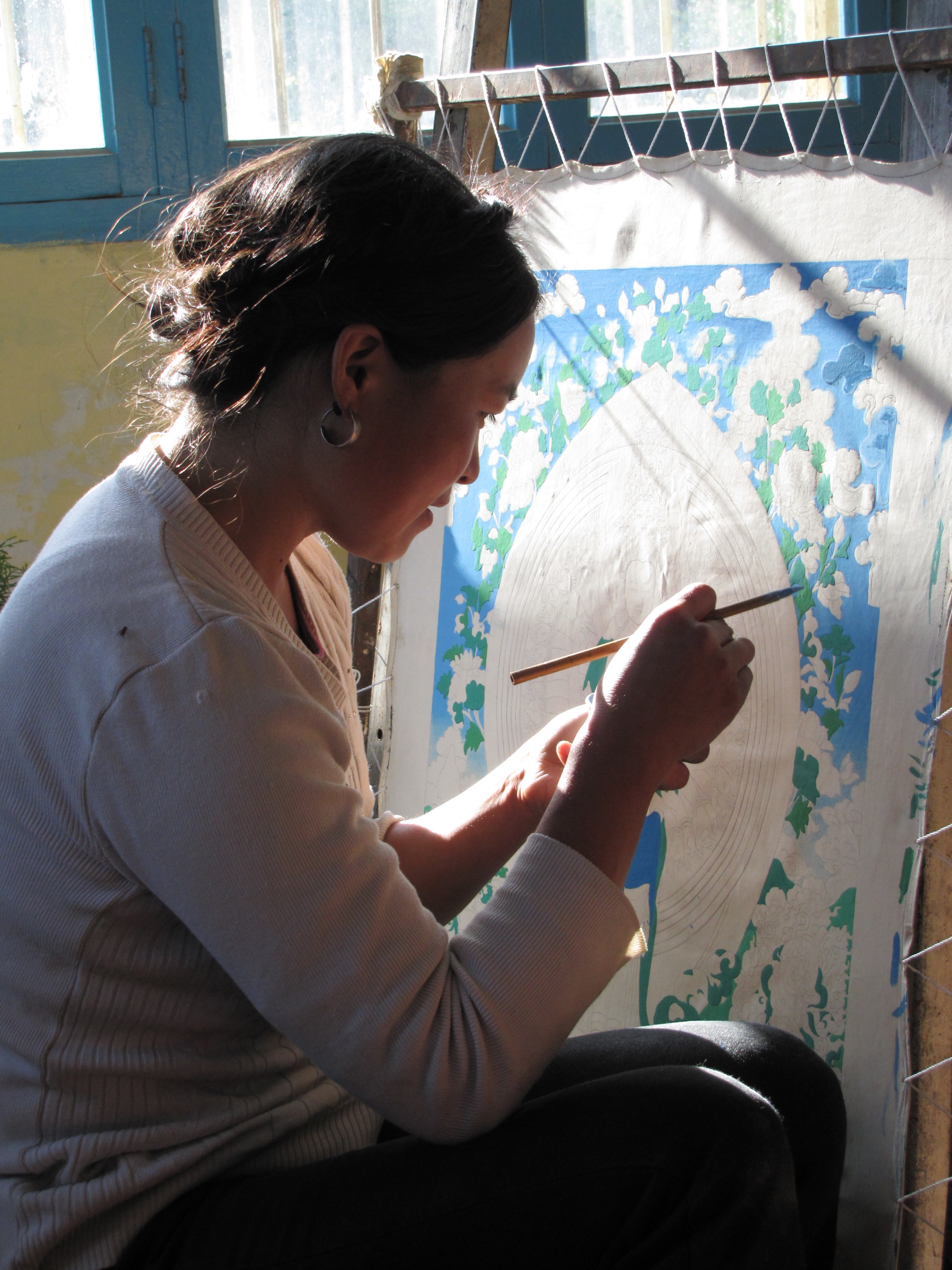
Women painters face great adversity as they strive to enter the art market.
Lutso: No. I don’t think there is another female painter like me who operates a studio all by herself, so I can only speak from my own experience. I can tell you that there are a lot of things that are unfair to female painters. For instance, I learned that I should not recruit apprentices who are older than me. I used to have one male apprentice who was several years older than me. He did not respect me. He did not follow my instructions. When there was a painting where I wanted to use my own design, he did not follow my instructions. He did not treat me as his teacher. I think he only painted for me for the money. From then on, I told myself that I could only accept apprentices younger than me, especially when they were male apprentices. Another challenge is socializing with clients. Some non-Tibetan clients have come to Rebgong and wanted to meet me. When [such a] client was a female , it was okay. We could have lunch or dinner together and nobody fussed. But when the client was a male, I was very nervous. It wasn’t that I was nervous about the men themselves but about other local people who would gossip about me. If they saw me having lunch or dinner with a man from elsewhere, even if all of my apprentices were at the dining table, people would gossip. They would insinuate that I had found a rich man and I wanted to hook up with him (Chinese: bang da kuan 傍大款). I really care about my reputation, so I try not to socialize with male clients. But because of that, I lose business.
Do people gossip about male painters if they socialize with female clients from elsewhere?
Lutso: No, no, no, no. People never criticize male painters when they socialize with female clients. This is a ridiculous situation. This is very unfair.
We understand that painters can innovate within the scriptural tradition. Do you see yourself as innovating in this way? In the film, “A Woman Who Paints Tangkas,” the gallery owner asks you what is special about your work and you seem not to know how to answer. We wonder how you would answer the gallery owner’s question today.
Lutso: I am much more experienced now than when I went to the gallery in Beijing [in 2019] [laughs]. Several years ago, if you showed me a tangka of another painter and commissioned the same thing, I would just paint the exact same tangka for you. But now, if you show me a tangka from another painter, even if it is of a subject that I have never painted before, I can tell you exactly where he/she did a good job and where he/she did a bad job. I would know how to improve on it. Painters cannot change the iconography of the Buddha or deities, but we have a lot of freedom to paint the background. For instance, I prefer to add flowers and plants to the background, when it is appropriate, so the painting looks vivid. Of course, I need to tell the client what I plan to do. Usually, the client approves of and likes my design. Another thing I have been experimenting with is color. I used to use bright and light colors. Now I prefer darker colors, which contrast beautifully with the gold line work. Every painter has his or her special color palette. But of course, painters copy each other’s work. If I paint something really nice today, something innovative, hundreds of copies will appear tomorrow.
How long does it take you to complete a work (from conception to finish)?
Lutso: It really depends on the size of the painting and the subject. Avalokiteśvara with Mind at Rest took me about six months from start to finish, from August 2017 until the Tibetan New Year in February 2018. It takes me just two or three days to paint a mini-sized tangka to put into a ga’u (a silver case for sacred objects).
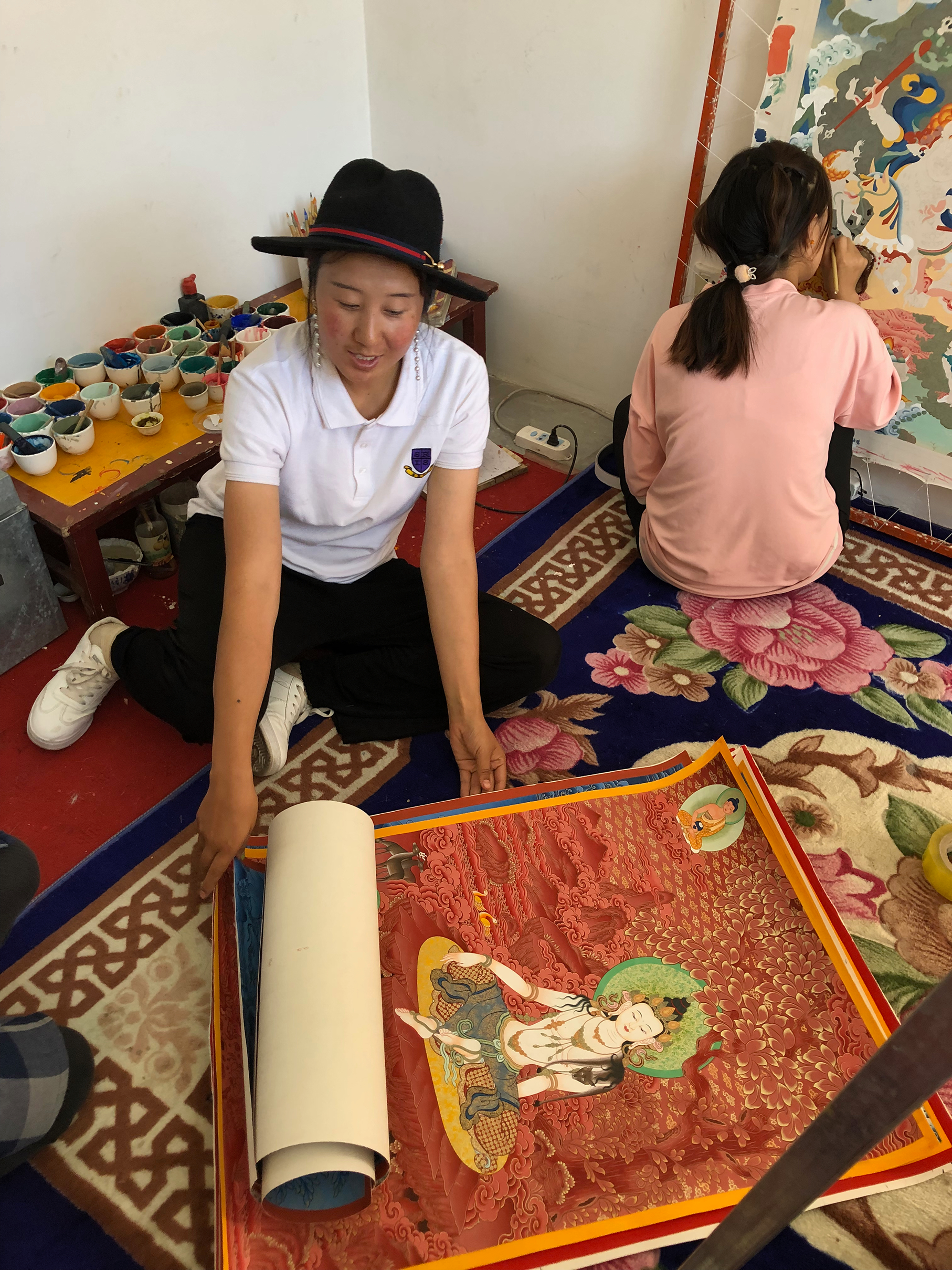
Lutso unveils Avalokiteśvara with Mind at Rest.
How are prices for tangka fixed with your gallerist in Beijing?
Lutso: I calculate the cost of the painting including the hours that my apprentices and I spent on the painting, the cost of mineral pigments and gold leaf, and add about 2,000 RMB (about $300 USD) to the total cost for a regular-sized painting.
Do you also work on commission for foreigners? Can you bypass the gallery?
Lutso: I do not have any foreign clients. They do not speak Tibetan or Chinese so it’s hard to communicate. A New York gallery is representing my artwork and has translated the titles and other information into English. I’ve just started with them. We have not had any clients yet. I meet most of my clients via social media platforms in China (e.g. WeChat, TikTok) where there is no gallery acting as a middleman. Last month, I met three clients on TikTok. They all commissioned the Four-Armed Avalokiteśvara and paid me very well: they agreed on the price I asked for, no bargaining. One of them is a Buddhist. He even asked me to have the tangka consecrated by a Rinpoche, which was impossible (laugh). A Rinpoche only does consecration on special occasions. He needs special offerings and rituals too. I took my tangkas to a monk in the Rongwo Monastery. It was where Avalokiteśvara with Mind at Rest (AMNH 70.3/8090) was also consecrated. The monk in the Rongwo Monastery never asks anything for the consecration, but I give the monastery 100RMB each time as an offering.
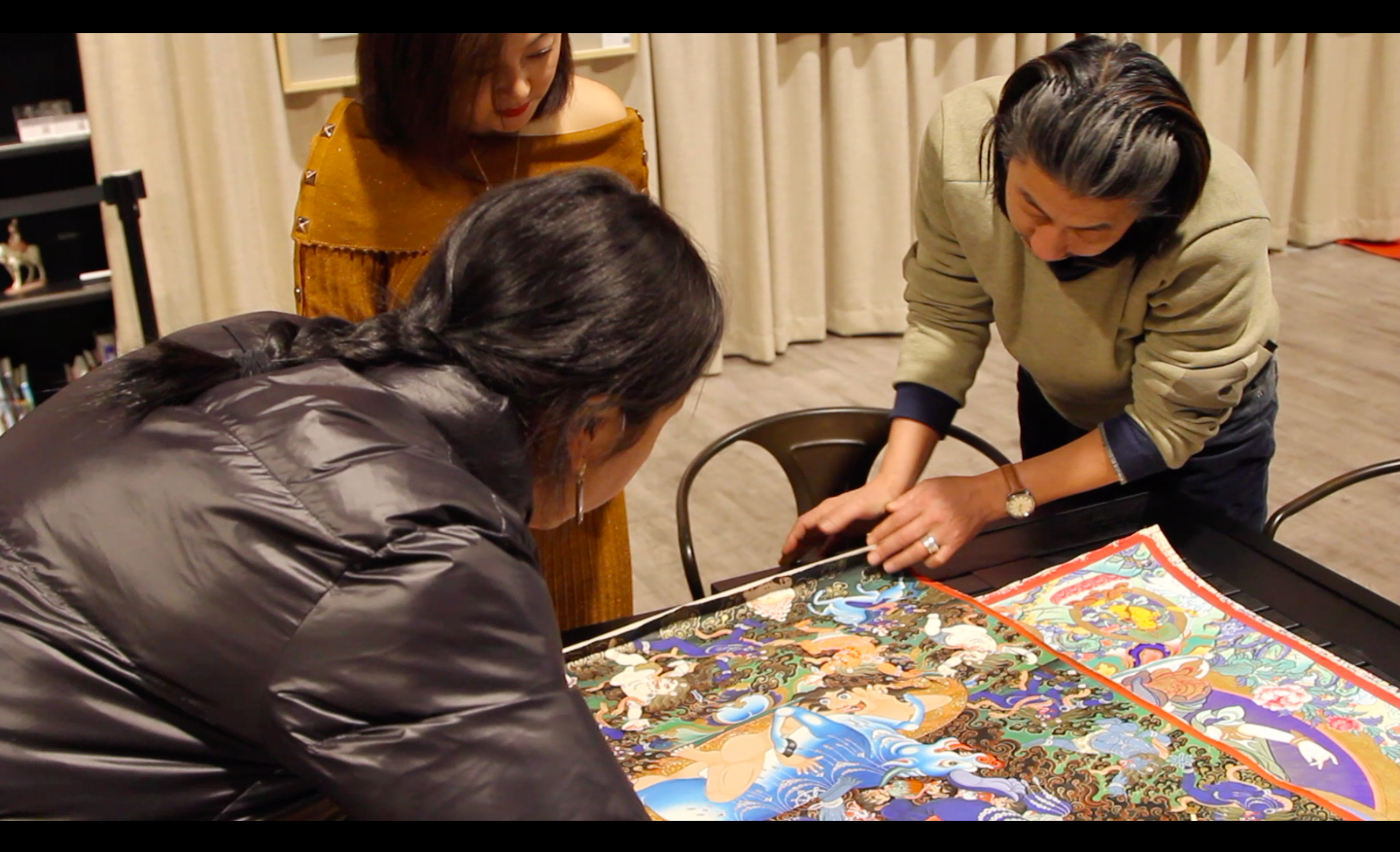
Lutso presents her work to a potential client in Beijing.
When the commission is for a sacred purpose, does the client request a specific image? Or does the painter sometimes suggest an image?
Lutso: It depends on the client’s needs, for instance, he may need to commission a tangka to dispel illness. Some clients consult a monk first to learn what type of image or deity he should commission. Some clients tell us about their problems and ask us for suggestions and if we do not know or are not sure, we ask the monk too. Some clients know exactly what they need to commission and give us specific instructions about what to paint. In other cases, if clients simply need tangkas to decorate their room–
MX: Do you mean non-Tibetan clients?
Lutso: Yes–or if they are commissioning tangkas for their art collection, they usually pick paintings they consider pretty.
When painting for a gallery—with the future user unknown—how do you decide what subject to paint?
Lutso: If there is no commission, it’s my free time [laughs], (so) I paint subjects that I like, or subjects I have not painted before. For instance, I like tangkas with a full-color palette and vermilion/red tangkas. I am not a fan of black tangkas, but many non-Tibetan clients prefer black tangkas. There are certain popular subjects in the art market. For instance, Four-Armed Avalokiteśvara, Green Tara, and Yellow Jambhala are very popular subjects. I just mentioned the three clients I had last month who all commissioned Four-Armed Avalokiteśvara! There are always clients who like tangkas of these deities.
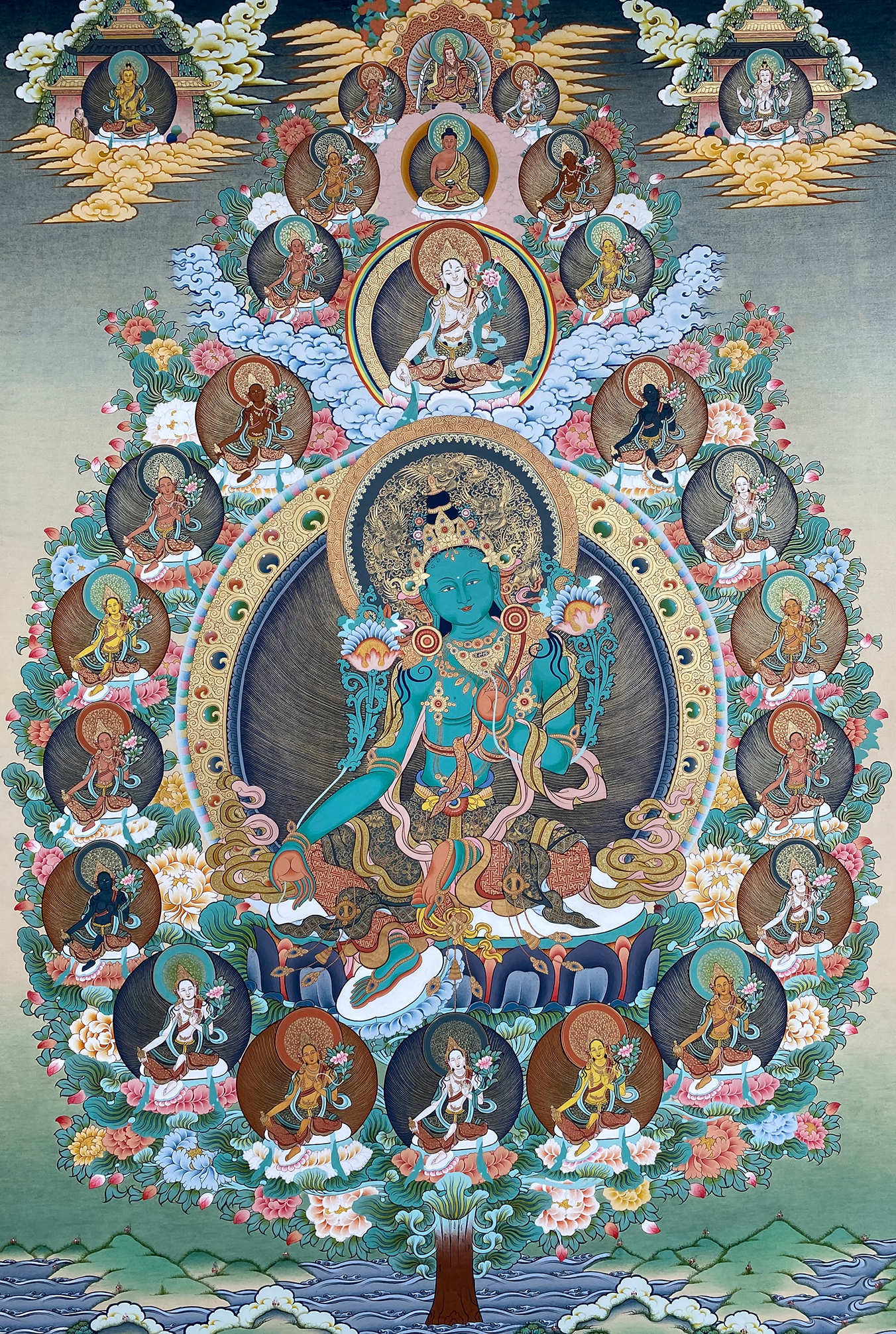
Lutso’s tangka depicting the Green Tara.
Do you do anything differently if you are painting for a local monastery rather than for a gallery?
Lutso: When I paint for the monastery, I need to attend to details and paint very carefully. For example, there are the dharma instruments. Sometimes I need to consult with Tibetan monks on whether the choice of a dharma instrument is correct, or if the instrument is placed in the hands of the right subject. I need to be very careful when I do the last step, the vivification, too. The monastery has quite a high standard for that: if the tangka has even so much as a tiny flaw, the monastery will reject the painting. Moreover, the price I set for the monastery is much lower than the price I set when the tangka is for the market. On the other hand, most non-Tibetan clients in the market only need for the painting to be pretty. I have had a few non-Tibetan clients who are sophisticated Buddhists, clients who have similar standard as monasteries. But those clients are very rare.


